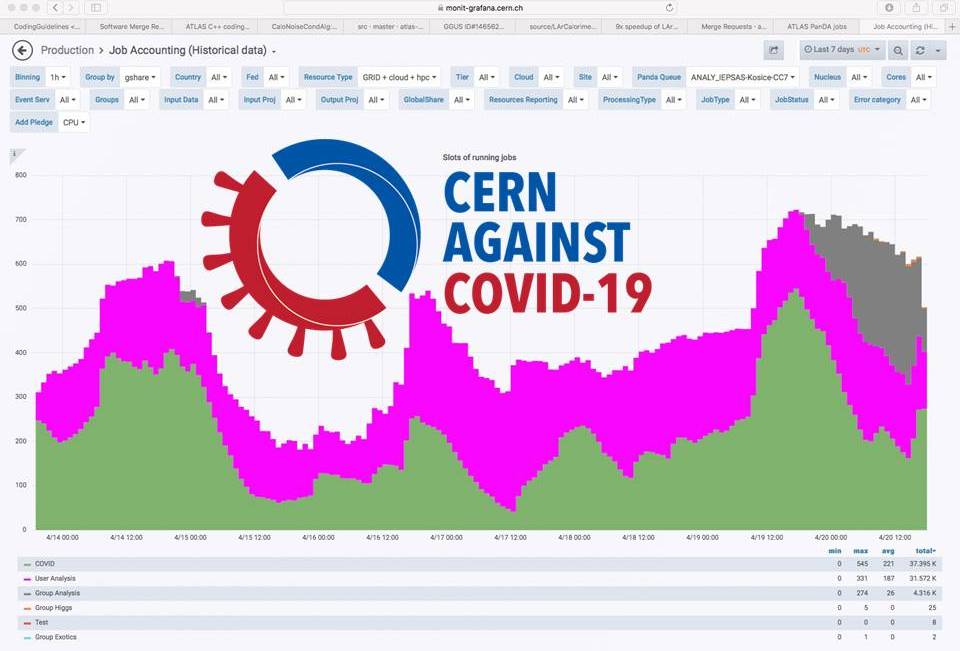Slovak computers help in the fight against coronavirus

Particle physicists from the Slovak Academy of Sciences have joined the worldwide research that contributes to detailed characterization of coronavirus proteins. Data acquired by calculations at GRID research node are essential for development of coronavirus vaccine and drugs. GRID node is part of Worldwide LHC Computing Grid (WLCG) used for for processing of experimental data at Large Hadron Collider LHC in CERN.
“In such serious situation we have decided to react promptly and contribute to worldwide effort to overcome the coronavirus pandemic. At the moment we do not do calculations only for CERN within the international projects ATLAS and ALICE. We have partially released capacities for simulations of proteins of new coronavirus which are essential for development of new drugs and vaccines. Thanks to industrial architecture of the CERN’s research grid situated in Košice we were capable to run necessary calculations quickly and without any major changes.” said Pavol Striženec from Institute of Experimental Physics, SAS.
For the last 20 years, worldwide WLCG grid network is situated in Slovak Republic. It was built by scientific community as a response to demand for data processing and simulations for particle detectors at the largest particle collider in the world, LHC in CERN. This network offers an uniform interface to access a wide variety of resources, thus speeding up and simplifying the work with data.
“Our departments were capable to maintain the GRID node operating despite the problems with state funding throughout the previous and this year, when we were almost forced to shut it down completely. This way we would like to illustrate that the investments to infrastructure of basic research, which are needed on a stable and long-term basis and which have been neglected in Slovakia for a long time, will always return in future as it is evident from the current situation.” added Pavol Striženec.
Last week, nodes processed approximately 400 tasks concerning the covid-simulations. Calculations were participated by experimental physicists from Slovak Academy of Sciences and scientists from Department of Nuclear Physics and Biophysics, Faculty of Mathematics, Physics and Informatics, Commenius University in Bratislava.
original authors: M. Hucáková, P. Stríženec
 Contact
Contact Intranet
Intranet SK
SK






